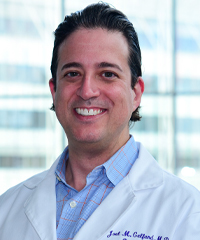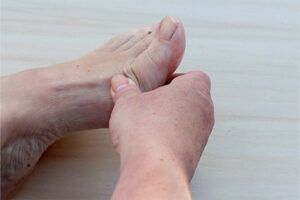Dermatology
Plaque Psoriasis
Best Biologic Choices After Therapeutic Failure on a Biologic
Overview
Multiple factors are considered in the context of treatment failure in patients with plaque psoriasis. These include the type of therapeutic failure (ie, primary or secondary failure), outcomes with previous biologic treatments, and the timing of the initiation of the new biologic.
Expert Commentary
Joel M. Gelfand, MD, MSCE
|
|
“For patients with psoriasis who have primary failure of a drug class, we usually recommend switching to a different class.”
For patients with psoriasis who have primary failure of a drug class, we usually recommend switching to a different class. But, for those who have what is called secondary failure, or loss of response, it is generally acceptable to stay within that same class. These are generalizations, and, of course, it is important to consider the individual patient and all of the options available. Some patients will cycle through a number of different therapies and then, all of a sudden, they may do really well on a tumor necrosis factor inhibitor when you switch back to it, even though they had previously failed with 2 other tumor necrosis factor inhibitors. So, although we may prefer an agent from a new class in the setting of primary failure, that does not mean that you should never go back to the class in question.
Regarding the timing and logistics of switching, many dermatologists used to be anxious about switching biologics when they first emerged. Some people thought that it was necessary to wait for the relatively long half-lives of these agents to pass before starting a new biologic. With that approach, however, it could be 3 months before the new agent is started.
Currently, I think that most of us in clinical practice would say that when you have a therapeutic failure, you should start the patient on the new drug right away or wait approximately 1 week before doing so. If you think about the loading phase for secukinumab, you are giving patients 1 shot weekly for 5 weeks. Thus, there is a place for clinical judgment here. If someone has psoriasis that is out of control and they are relatively healthy (ie, at relatively low risk for infections), you would probably give them the next shot of their new drug as soon as you can.
Still, there is a need for caution when adding another biologic too soon in an individual who may be more prone to infection due to age or underlying comorbidities. Therefore, we need to take a step back and realize that, although for most patients it is likely fine to start a new biologic right after discontinuing another one, there may be individual situations where you would want to be a bit more careful about having too many biologics on board.
References
Menter A, Strober BE, Kaplan DH, et al. Joint AAD-NPF guidelines of care for the management and treatment of psoriasis with biologics. J Am Acad Dermatol. 2019;80(4):1029-1072. doi:10.1016/j.jaad.2018.11.057
Tsai Y-C, Tsai T-F. Switching biologics in psoriasis – practical guidance and evidence to support. Expert Rev Clin Pharmacol. 2020;13(5):493-503. doi:10.1080/17512433.2020.1767590
Wang T-S, Tsai T-F. Biologics switch in psoriasis. Immunotherapy. 2019;11(6):531-541. doi:10.2217/imt-2018-0131











